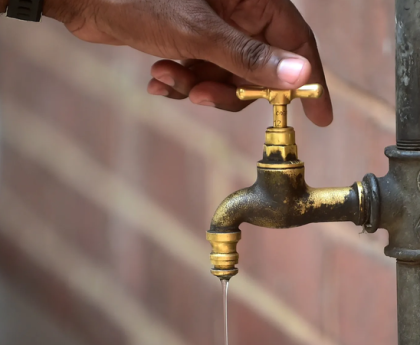How Solar Pumps are Used in Irrigation Farming
- Water Lifting and Distribution:
- Solar water pumps lift water from underground wells or surface sources.
- They distribute water to fields through:
- Drip Irrigation: Provides water directly to plant roots, minimizing wastage.
- Sprinkler Systems: Sprays water evenly over crops, ideal for wide coverage.
- Flood Irrigation: Supplies water across large fields, though less efficient than drip or sprinkler methods.
- Storage Systems:
- Pumps often fill storage tanks during daylight hours.
- Stored water can be used for irrigation at night or during cloudy days.
- Automation:
- Advanced solar water pumps are integrated with smart controllers that automate water supply based on soil moisture or weather conditions.
Types of Solar Water Pumps for Irrigation
- Surface Pumps:
- Used to move water from shallow sources like rivers or ponds.
- Suitable for sprinkler or surface irrigation systems.
- Submersible Pumps:
- Designed for deep wells and boreholes, capable of lifting water from depths exceeding 50 meters (164 feet).
- Ideal for drip and sprinkler irrigation in areas with limited surface water.
- Floating Solar Pumps:
- Operates on water bodies like lakes or reservoirs.
- Efficient for irrigation in areas near large water sources.
Advantages of Solar Water Pumps in Irrigation Farming
- Cost-Effective:
- Eliminates fuel costs associated with diesel pumps.
- Reduces dependency on grid electricity.
- Sustainable and Eco-Friendly:
- Operates on renewable energy, reducing carbon emissions.
- No risk of environmental pollution from fuel leaks.
- Reliable in Remote Areas:
- Provides consistent water supply in off-grid locations.
- Suitable for regions with abundant sunlight.
- Increases Productivity:
- Ensures timely and adequate irrigation, improving crop yields.
- Reduces labor requirements by automating water distribution.
- Low Maintenance:
- Fewer moving parts reduce wear and tear.
- Durable components like stainless steel or engineering-grade plastics enhance lifespan.
- Water Efficiency:
- Paired with drip or sprinkler systems, solar pumps minimize water wastage.
Challenges and Solutions
- Challenge: High Initial Investment
- Solar water pumps can have a higher upfront cost compared to diesel or electric pumps. Solution:
- Leverage government subsidies, grants, or microfinance schemes.
- Share pump systems among farming cooperatives.
- Solar water pumps can have a higher upfront cost compared to diesel or electric pumps. Solution:
- Challenge: Sunlight Dependency
- Performance is weather-dependent, with reduced efficiency on cloudy days. Solution:
- Install water storage tanks for backup.
- Use hybrid systems (solar + grid/diesel) for continuous operation.
- Performance is weather-dependent, with reduced efficiency on cloudy days. Solution:
- Challenge: Lack of Technical Knowledge
- Farmers may lack the expertise to install and maintain systems. Solution:
- Provide training programs and establish local maintenance centers.
- Farmers may lack the expertise to install and maintain systems. Solution:
Impact on Irrigation Farming
- Improved Crop Yields:
- Ensures consistent water supply, even during dry seasons.
- Enables multi-season farming, increasing annual productivity.
- Cost Savings:
- Reduces long-term operational costs compared to diesel or electric pumps.
- Farmers reinvest savings into better seeds, fertilizers, and equipment.
- Enhanced Livelihoods:
- Solar irrigation allows farmers to grow higher-value crops, improving income.
- Saves time and labor, which can be redirected to other activities.
- Environmental Benefits:
- Promotes sustainable water management and reduces reliance on fossil fuels.
Applications in Various Farming Systems
- Drip Irrigation:
- Ideal for fruit orchards, vegetables, and high-value crops.
- Provides precise water delivery to root zones, reducing wastage.
- Sprinkler Irrigation:
- Best for crops like wheat, maize, and rice that require wider coverage.
- Flood Irrigation:
- Used for traditional farming systems where cost constraints exist, though less efficient.
- Greenhouses:
- Maintains controlled watering for protected cultivation of vegetables and flowers.
Successful Examples
- India: Solar water pumps have revolutionized irrigation in drought-prone areas, reducing farmers’ reliance on expensive diesel pumps.
- Africa: Initiatives in Kenya and Ethiopia have improved food security by providing reliable irrigation for smallholder farmers.
- Latin America: Solar pumps are enhancing irrigation efficiency for coffee and cocoa plantations in remote regions.





